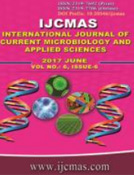


 National Academy of Agricultural Sciences (NAAS)
National Academy of Agricultural Sciences (NAAS)

|
PRINT ISSN : 2319-7692
Online ISSN : 2319-7706 Issues : 12 per year Publisher : Excellent Publishers Email : editorijcmas@gmail.com / submit@ijcmas.com Editor-in-chief: Dr.M.Prakash Index Copernicus ICV 2018: 95.39 NAAS RATING 2020: 5.38 |
Fever has become a common presenting complaint in the developing world. The symptoms and differential diagnosis of the most common fevers in the tropics that making an accurate clinical diagnosis was difficult without laboratory confirmation. These fevers also lead to high morbidity and mortality. But the exact burden of each infection varies from region to region. Due to high prevalence of local individual diseases the prioritization of the differential diagnosis of a clinical syndrome of acute undifferentiated febrile illness (AUFI) was needed. So the present observational study was conducted among 116 patients to find the etiology, prevalence of AUFI at our tertiary care centre .On admission, after obtaining a detailed history a thorough clinical examination was done to check for symptoms and signs, then the patient’s blood and serum sample were collected and various diagnostic tests for Malaria, Dengue, Typhoid, Scrub typhus, Leptospirosis, Chikungunya were done. In our study, Typhoid was the leading cause of AUFI 28(24.14%), followed by Dengue 12(10.35%), Malaria 6(5.17%) and Scrub typhus 2(1.72%). However 5(4.31%) cases had Mixed infections. There were almost 63(54.31%) Undiagnosed infections reported. Another fact in our study was that out of the 116 patients evaluated, 39 (33.6%) were children of the age group (0-15) years that again invites concern. Hence the present study highlights the need for active surveillance of AUFI, since majority of cases remain undiagnosed there is a need for further research to create a diagnostic algorithm that will aid in timely management of the patients with AUFI.
 |
 |
 |
 |
 |